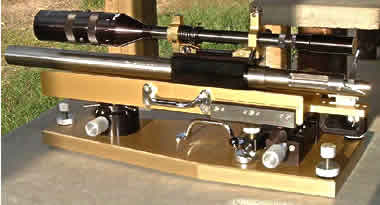I came across this article at the Lilja website about rigidity. It may be of use in selecting your next barrel.
An Ar may have even more problems with long heavy barrels than other platforms due to the short amount of barrel in the receiver.
There is the trade off between velocity of a longer barrel and it's rigidity as pointed out in the article.
Using the formulas in the article someone with better math skills and inclination than me should be able to get a petty good idea of ideal barrel length, diameter and contour.
I would very much like to hear any empirical evidence the hoard might have, I know there are some pretty accurate short barreled rifles out there.
An Ar may have even more problems with long heavy barrels than other platforms due to the short amount of barrel in the receiver.
There is the trade off between velocity of a longer barrel and it's rigidity as pointed out in the article.
Using the formulas in the article someone with better math skills and inclination than me should be able to get a petty good idea of ideal barrel length, diameter and contour.
I would very much like to hear any empirical evidence the hoard might have, I know there are some pretty accurate short barreled rifles out there.

Comment